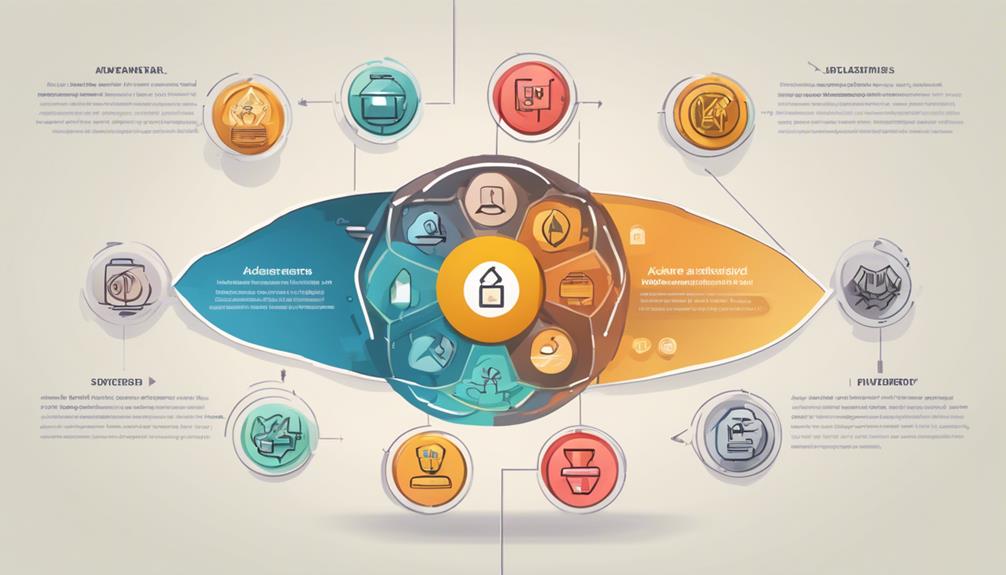As you navigate the intricate landscape of change management, understanding the key insights is essential for steering your organization towards success amidst transformation. From fostering change readiness to engaging employees effectively, each aspect plays a pivotal role in shaping the outcome of change initiatives. By delving into the nuances of addressing resistance factors, implementing robust communication strategies, and recognizing the leadership's influence, you can reveal a path towards sustainable change within your organization. Stay tuned to uncover how these key insights can be the cornerstone of your change management strategy.
Importance of Change Management

Understanding the significance of change management is essential for the success of any organization. Change readiness is critical as it determines how well a company can adapt to new circumstances. It involves preparing employees to embrace change positively and proactively. By fostering change readiness, organizations can navigate transformations more smoothly and effectively.
Organizational alignment is another key aspect of change management. It refers to ensuring that all levels of the organization are in sync with the proposed changes. When there's alignment, everyone is working towards the same goals and objectives, minimizing resistance and maximizing cooperation.
Leaders play an important role in driving organizational alignment by clearly communicating the vision for change and involving employees in the process.
Common Resistance Factors
You may encounter various common resistance factors when implementing change in an organization. Resistance behaviors can manifest in different ways, such as employees being hesitant to embrace new processes, fear of job security, or simply feeling comfortable with the status quo.
Overcoming objections is important during the change process to guarantee a smooth shift. It's essential to address concerns openly and transparently, provide adequate support and training, and actively involve employees in the decision-making process to gain team buy-in.
To effectively manage resistance, communication plays a significant role. By fostering a culture of open dialogue, listening to employee feedback, and clarifying the reasons behind the change, you can help alleviate resistance. Additionally, recognizing and rewarding employees who adapt well to the change can motivate others to follow suit.
Effective Communication Strategies

To enhance change management success, implementing clear and consistent communication strategies is vital. Effective communication fosters understanding, alignment, and engagement among team members during times of change. Team dynamics play an important role in change management, influencing how information is received and how well individuals adapt to new circumstances. Utilizing various communication channels is essential to reaching all team members effectively.
| Team Dynamics | Communication Channels |
|---|---|
| Recognize diversity within the team and adapt communication styles accordingly | Utilize multiple channels such as emails, meetings, and feedback sessions |
| Encourage open dialogue and create a safe space for sharing concerns and ideas | Implement digital platforms for remote teams to stay connected and engaged |
| Foster a culture of transparency and honesty to build trust within the team | Utilize visual aids and storytelling to convey complex messages in a simple and relatable manner |
| Address conflicts promptly and constructively to maintain team cohesion | Establish regular check-ins and progress updates to make sure everyone is informed and on track |
Leadership Role in Change
Recognizing the pivotal role that leadership plays in driving successful change initiatives is essential for managing organizational transformations effectively. As a leader, your support during change implementation is essential. Your ability to communicate the vision for change, align resources, and inspire your team can greatly impact the success of the transformation.
Leadership support is crucial in setting the tone for change within the organization. By demonstrating your commitment to the change initiative, you can help employees understand the importance of the transformation and encourage their active participation. Your role in providing guidance, addressing concerns, and fostering a culture that embraces change is instrumental in guiding the challenges that may arise during the implementation process.
Effective change implementation requires strong leadership that's proactive, adaptive, and empathetic. Your leadership style can influence how smoothly the organization progresses through change. By actively engaging with employees, soliciting feedback, and leading by example, you can create a supportive environment that promotes collaboration and innovation throughout the change process.
Employee Engagement Techniques

Effective employee engagement techniques are essential for fostering a positive and productive work environment during times of change. Team building activities play a vital role in enhancing collaboration and communication among employees. Encouraging teamwork through group projects or team-building exercises can create a sense of unity and shared purpose, boosting morale and motivation.
Motivation techniques also play a significant role in engaging employees during periods of change. Recognizing and rewarding employees for their efforts and achievements can help maintain high levels of motivation and commitment. Providing opportunities for professional development and growth can also keep employees engaged and invested in their work.
Additionally, open and transparent communication is necessary for engaging employees. Keeping employees informed about changes, involving them in decision-making processes, and actively listening to their concerns can foster a sense of trust and empowerment.
Impact of Organizational Culture
Understanding the impact of organizational culture is crucial for comprehending how workplace dynamics shape responses to change. Organizational culture encompasses shared beliefs, values, and behaviors that define the way things are done within a company.
When maneuvering through change, being cognizant of your organization's values can provide insights into how employees may react to new initiatives.
A cultural shift within an organization can either facilitate or impede change efforts. If the current culture aligns with the desired changes, employees are more likely to embrace and adapt to the new ways of working.
On the other hand, if there's a significant mismatch between the existing culture and the proposed changes, resistance and friction may arise.
To successfully implement change, leaders must be attuned to the prevailing organizational culture and be prepared to address any discrepancies between current values and the desired state.
Change Management Models

Understanding different change management models is essential for managing organizational shifts effectively. Two prominent models are Lewin's Model and Kotter's Model. Lewin's Model emphasizes the three stages of change: unfreezing, changing, and refreezing. It suggests that change is best implemented by first preparing the organization for change, then making the necessary changes, and finally solidifying those changes to make them permanent. On the other hand, Kotter's Model consists of eight steps that guide organizations through the change process, including creating a sense of urgency, forming a powerful coalition, and generating short-term wins.
| Lewin's Model | Kotter's Model |
|---|---|
| Unfreezing | Create urgency |
| Changing | Form coalition |
| Refreezing | Generate wins |
These models provide structured approaches to navigate change successfully. By understanding and applying them appropriately, you can increase the likelihood of achieving successful organizational transformations.
Measuring Change Success
To gauge the effectiveness of change initiatives, measuring change success is crucial in determining the impact of organizational shifts. Utilizing quantifiable metrics and success indicators allows you to objectively assess whether the intended changes are producing the desired outcomes. By establishing clear benchmarks and performance indicators at the outset of a change management initiative, you can track progress and evaluate the success of the transformation process.
Quantifiable metrics provide concrete data points that enable you to measure progress towards organizational goals. These metrics could include factors such as increased productivity, reduced costs, improved employee satisfaction, or enhanced customer retention rates.
Success indicators, on the other hand, offer qualitative insights into the overall impact of the change on the organization's culture, employee morale, and customer perception.
Regularly monitoring these quantifiable metrics and success indicators allows you to make informed decisions, adjust strategies as needed, and celebrate milestones achieved throughout the change management journey. Ultimately, measuring change success provides a roadmap for continuous improvement and ensures that organizational transformations are aligned with the desired outcomes.
Conclusion
To sum up, by prioritizing change readiness, addressing resistance, communicating effectively, leading with commitment, and engaging employees, organizations can successfully navigate change management initiatives.
Remember to continuously assess progress, adapt strategies as needed, and foster a culture that embraces change.
With these key takeaways in mind, organizations can drive positive transformations, achieve desired outcomes, and ultimately thrive in an ever-evolving business landscape.




